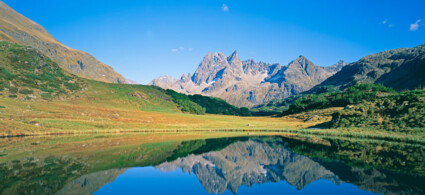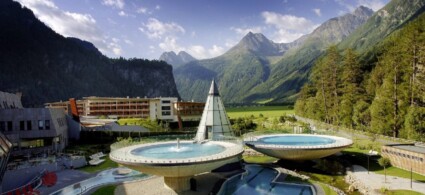

Let yourself be enchanted by Austria. The state that marks the northern border of South Tyrol and Friuli-Venezia Giulia will amaze you with its unique mix of nature, culture, art and traditions. From the green valleys of the Tyrol to cosmopolitan Vienna, from Salzburg, overflowing with history and culture, to the traditional Alpine villages, you will discover a modern country open to tourism, which tries hard to be more than a miniature Germany, thanks to its unique and inimitable traits and a past in which it was one of the most prosperous kingdoms in Europe.
In this respect, regal Vienna was the capital of the Austro-Hungarian Empire, the home of the Habsburg dynasty, who shaped it in their own image, with elegant palaces and magnificent residences, so much so that today, walking around the city, one feels as if living in a 19th century court. At the same time, Salzburg is a triumph of the Baroque. Austria’s second largest city, the birthplace of Mozart, is so closely linked to music and art that UNESCO has included it in its World Heritage list.
But it is outside the cities that one breathes the true essence of Austria. Unspoilt nature, Alpine valleys surrounded by majestic peaks, crystal-clear rivers and lakes, fir and beech forests, and an endless array of outdoor activities to do, both in summer and winter.
It is precisely in winter that the country experiences its tourist boom, thanks to an endless list of some of the most beautiful ski resorts in the world. They range from the splendid Kitzbuehel, laid-back and home to elite tourism, to the boisterous atmosphere of Ischgl, a resort where nightlife and apres-ski are the undisputed protagonists, so much so that even skiing takes a back seat. In between, a series of internationally renowned ski resorts such as Solden, St. Anton, Lech, Mayrhofen, Bad Gastein and many more make Austria a paradise for mountain sports lovers.
The gateway to Austria is Vienna International Airport, which alone handles almost 90% of the country’s air traffic and is excellently connected to the whole of Europe by direct flights of numerous airlines, including the country’s national airline Austrian Airlines. In recent years, Vienna Airport has also opened up to low-cost traffic, so there are also many flights offered by Ryanair, Easyjet and Wizz Air, which have opened numerous connections to various European airports.
Visiting Austria in depth is certainly no small thing, as between cities, alpine villages and unspoilt nature, there are many things to see in Austria. It is advisable to divide the country into regions, and concentrate on just a few of them, or on the cities, leaving the rest for later travels.

It is impossible not to be enchanted by the royalty and elegance of Vienna. The Austrian capital is one of the most beautiful cities in Europe, literally full of things to see, starting with St. Stephen’s Cathedral, passing by the enormous Hofburg, the Habsburgs’ headquarters, now a museum. Also not to be missed is a visit to Schonbrunn Palace, built in 1730 outside the city as the former hunting lodge of the Habsburgs, now incorporated into the suburbs of Vienna and declared a UNESCO World Heritage Site.
Vienna is also world-famous for its Opera House, and the magnificent Belvedere Palace, located a short distance away. After sightseeing and museums, spend a relaxing day at the Prater, the city’s green lung, a park beloved by Viennese and tourists alike, where there is a large amusement park and where the famous Ferris wheel stands.
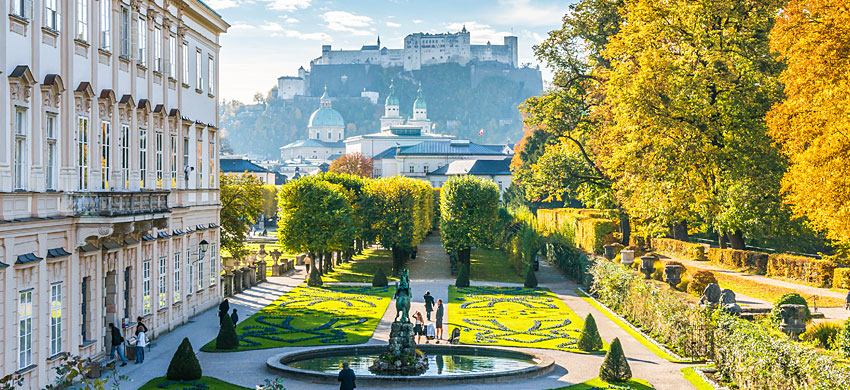
The beautiful Salzburg, birthplace of Wolfgang Amadeus Mozart, is a jewel located on the banks of the Salzach River. The old town is located on the left bank, and is flanked by a hill on the top of which is the medieval fortress, the city’s former castle.
Staying in the centre, don’t miss a visit to Mozart’s birthplace, the beautiful cathedral square, where the 17th century cathedral stands, and take a stroll along Getreidegasse, the city’s shopping street.
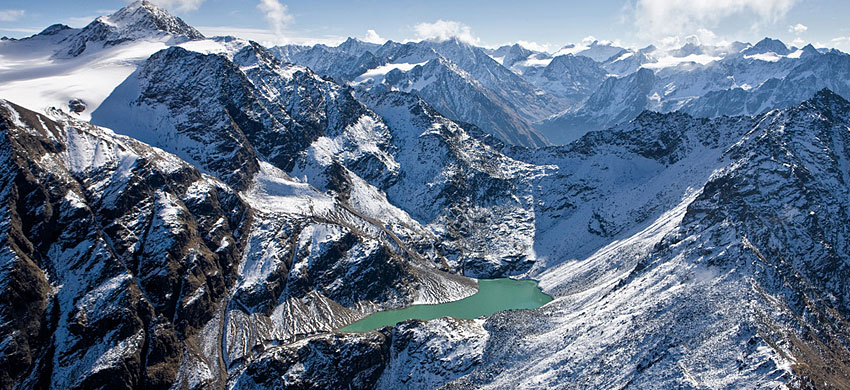
The Tirol region, the south-western tip of Austria, is sandwiched between Germany, Switzerland and Italy. It is one of the country’s most tourist-oriented areas, both in summer, when hikers cross its valleys on foot or by bike and climb its peaks, and in winter, when skiers from all over the world flock to its most famous resorts, such as St. Anton, Lech, Mayrhofen, Solden, Kitzbueheland Ischgl.
A visit to Tyrol’s largest city, the magnificent Innsbruck, and the surrounding villages and resorts, such as Kufstein, Hall in Tirol or Zell Am See, is also very interesting. Finally, a visit to the Swarovski factory-museum in Wattens is not to be missed. It is here that the crystals and jewellery that fill boutiques all over the world are produced.
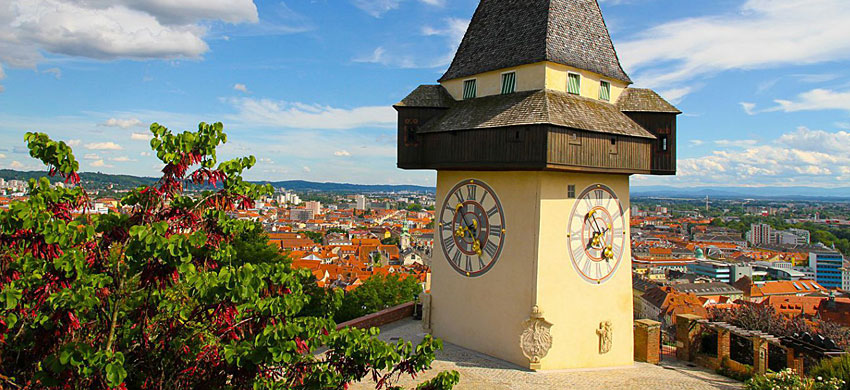
Graz, the capital of Styria, is a very interesting city to visit. Start by exploring the Hauptplatz, the main square of the old town, from which numerous narrow streets bustling with shops and restaurants branch off. For a magnificent view of Graz from above, take the funicular railway up to the Schlossberg hill for a unique panorama.
Graz is also renowned for its museums, including the Landeszgeuhaus, where an impressive collection of weapons is on display. For something truly alternative, head for the Murinsel, a small artificial island located on the Mura river, connected on both sides by a small steel footbridge, where you will find a small playground and café.

The Salzkammergut is an area of Austria with a high vocation for tourism, comprising parts of the regions of Upper Austria, Salzburg and Styria. It has been a UNESCO World Heritage Site since 1997, and its must-see destinations are Hallstatt, Obertraun, Gosau and Bad Goisern.
In this area, nature is magical: between snow-capped peaks, forests and lakes, it feels like being in a postcard. But in addition to hiking and mountain biking trails, you can enjoy swimming or water sports in the many lakes, horseback riding and relaxation in one of the many spas in the surrounding area.

Depending on the days available, it is possible to plan a tour of Austria that allows you to visit the whole country, or just a part of it. Bearing in mind that the country in an east-west direction can be crossed in about 9 hours by car, it is possible to make a memorable on-the-road loop tour, starting and returning to Vienna. The timing of the individual stops obviously depends on the total time available, but what follows is an outline of an itinerary, which can be completed in 5, 7 or 14 days.
After visiting Vienna for at least 2 or 3 days, you will have to leave by car in a westerly direction, if you have not arrived by your own means you will then have to rent a car in Vienna.
Your first stop will be the famous village of Hallstatt, which has become a true symbol of Austria. After your visit, proceed to Salzburg. After one or two nights in the city of Mozart, continue to the Tyrol, where you can stop off in Innsbruck and spend a few days visiting picture-postcard villages and hiking to mountains, lakes and forests.
On the way back to Vienna, you pass through Carinthia, the region bordering Friuli-Venezia Giulia, visiting Villach and Klagenfurt, before arriving in Graz, a UNESCO World Heritage city, from which Vienna is only a hundred kilometres north by motorway.

Austria is a destination that lends itself to both summer and winter visits. During the warm season, the days are long and pleasant, you can stay out late and make the most of the daylight hours, and nature is lush and green. In winter, of course, there is skiing: the Austrian Alpine resorts are among the most famous in the world, and are literally taken by storm by tourists and skiers, including many families with children.
An on-the-road tour of Austria is also pleasant to do in spring, especially from the end of April to the end of May, when prices are lower, there are fewer tourists, the country has shaken off the cold winter and nature is starting to awaken. Finally, the wonderful capital Vienna is a 365-day-a-year destination, although spring and autumn tend to be rainy, and winter is very cold. Worthy of note are the markets, both at Christmas and Easter, which are held in various squares around the city.
For more information on the best time to travel in Austria, average temperatures and monthly rainfall, we suggest you read the Austria Weather page.
Are you planning to visit Austria? With our tips you’ll discover how easy it is to organise your holiday in Austria on your own : flights to Vienna leave from Europe’s main airports, choose the time of year that suits you best and book your accommodation following our advice on where to stay.
Take a look at the map and build your own itinerary through cities such as Salzburg, Innsbruck or Graz, and check the weather before you go!

